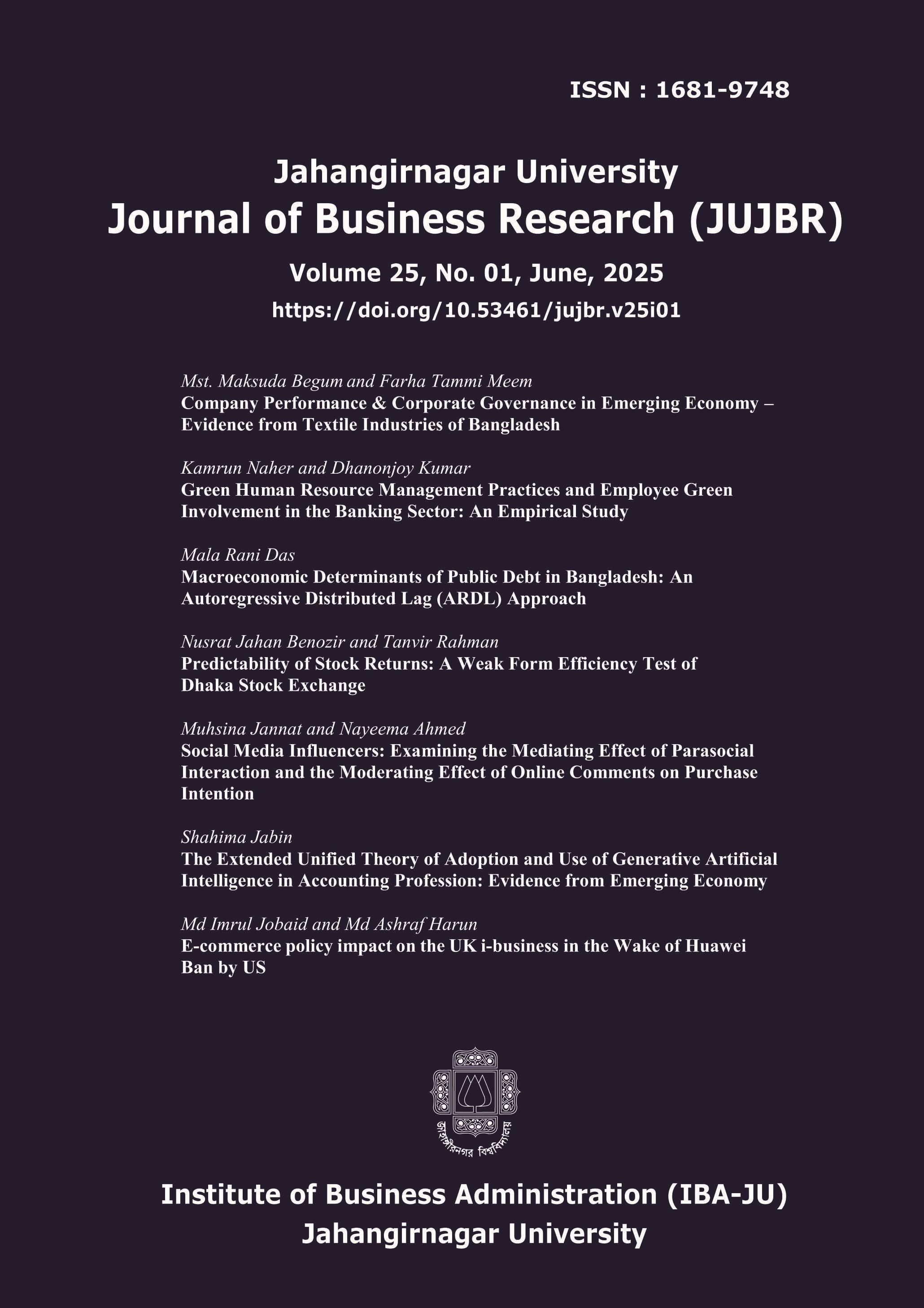Green Human Resource Management Practices and Employee Green Involvement in The Banking Sector: An Empirical Study
Green HRM Practices and Employee Green Involvement
DOI:
https://doi.org/10.53461/jujbr.v25i01.82Abstract
ABSTRACT
This study observes the association between Green Human Resource Management (GHRM) practices and Employee Green Involvement (EGI) in Bangladesh's banking sector. Moreover, this paper's framework consisted of Ability Motivation Opportunity (AMO) theory, in which Ability, Motivation, and Opportunity were focused on creating a model basement. This study used the partial least square structural equation modeling technique in data analysis. Self-administered questionnaires are used for data collection from different levels of employees of state-owned commercial banks in Bangladesh. Research questionnaires were sent to employees working in four banks through 38 branches in Dhaka and Rajshahi divisions. The data were collected from 385 bank employees using a simple random sampling method. The study outcomes confirm that GHRM functions like GRS, GTD, GPAM, and GPRM have a strong positive association with EGI in Bangladesh's banking sector. These recommendations clarify the affiliation between sustainable GHRM practices and employee involvement, increasing employee participation and commitment to organizational success. The study's limitations are generalizability, cross-sectional design, and lack of mediation analysis. Future researchers should employ a more diverse technique, different areas, and longitudinal techniques to establish causative interactions and incorporate mixed research methods for gaining in-depth insights with more variables.

Downloads
Published
How to Cite
Issue
Section
License
©2018 Jahangirnagar University Journal of Business Research. All rights reserved. However, permission is granted to quote from any article of the journal, to photocopy any part or full of an article for education and/or research purpose to individuals, institutions, and libraries with an appropriate citation in the reference and/or customary acknowledgement of the journal.

